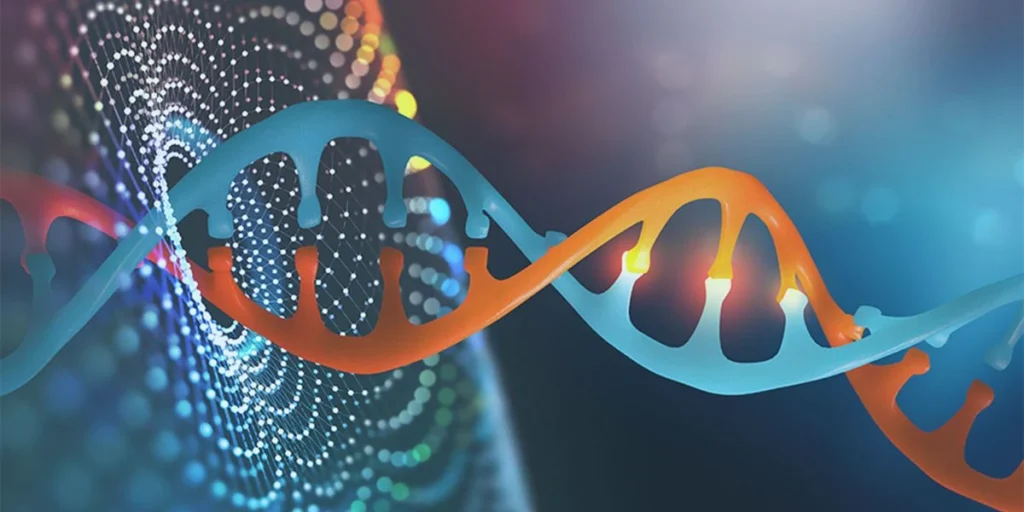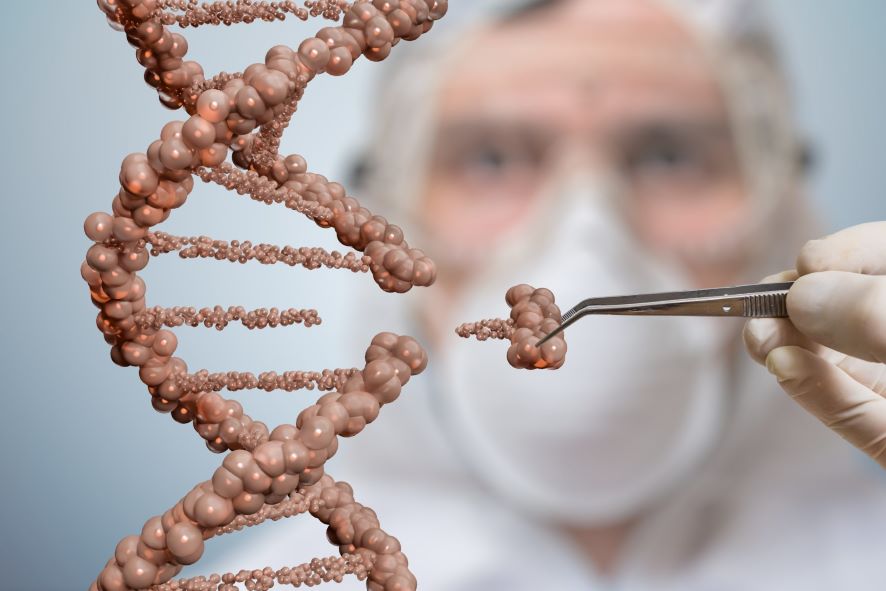
Genetic engineering significantly shapes science and society in powerful ways. Specifically, it enables the creation of new organisms and transforms medicine, agriculture, and the environment. Recently, breakthroughs such as faster genetic tests and the use of CRISPR-Cas for precise gene editing have been achieved. Moreover, each genetic engineering conference inspires collaboration and sparks new ideas that change lives.
Genetic Engineering

Definition
Genetic engineering changes the way people see life. Initially, scientists use it to change the DNA of living things. This field started with simple ideas. For example, early work included cloning and artificial insemination. However, today, it means something more. Currently, it focuses on recombinant DNA technology. In this process, scientists combine DNA from different sources and then insert this new DNA into a host. This development began in the 1970s and has since shaped modern science.
Techniques
Scientists use many tools to change DNA. In fact, each method has strengths and weaknesses. Among these, the most popular methods include CRISPR, TALENs, and ZFNs. The table below shows how these methods compare:
| Technique | Design Complexity | Cost | Success Rate | Specificity | Off-target Effects |
|---|---|---|---|---|---|
| Zinc Finger Nucleases (ZFNs) | Difficult | High | Low | Moderate | Yes |
| TALENs | Feasible | Moderate | High | High | Yes |
| CRISPR/Cas9 | Easy | Low | High | Moderate | Yes |
CRISPR stands out. It is easy to use and costs less. It works well for many tasks. TALENs offer high accuracy but cost more. ZFNs are hard to design and less successful. All methods can cause off-target changes, but each helps scientists in research and manipulating genes.
How It Works
The process of genetic engineering follows clear steps. Each step brings people closer to new discoveries.
- Scientists find and isolate the target gene.
- They use PCR to make many copies of the gene.
- They check the DNA with gel electrophoresis.
- They cut the gene and a vector with restriction enzymes.
- They join the gene and vector to make recombinant DNA.
- They put the recombinant DNA into host cells.
- They select cells that took up the new DNA.
- The host cells express the new gene and show the desired trait.
- Advanced tools like CRISPR can make precise changes.
This process helps people solve real problems. Moreover, it brings hope for new cures, better crops, and a cleaner world. Overall, every step shows the power of genetic engineering and the promise of science.
Applications of Genetical Engineering

Medicine
Gene editing brings hope to medicine. Nowadays, scientists treat diseases once thought incurable. For example, the mvGPT platform edits, activates, and silences many genes at once. This tool works well in human liver cells, which helps treat several genetic diseases together. In addition, CRISPR technology changes T-cells for cancer therapy. These new T-cells fight cancer better and lower the risk of rejection. Similarly, stem cell editing creates immune-tolerant cells, reducing the need for strong drugs. In a recent case, doctors used personalized CRISPR therapy for a baby with a rare disorder. As a result, the child thrived after treatment. Overall, these advances show the power of teamwork and science.
Agriculture
Farmers use gene editing to grow stronger crops. They now plant seeds that resist pests, drought, and disease. The table below shows how these changes help:
| Strategy | Benefit | Example |
|---|---|---|
| Bt Gene | Pest resistance, higher yield | Bt maize, Bt cotton |
| Stress Tolerance Genes | Survive drought, heat, salt | Modified cereals |
| Photosynthesis Enhancement | More food from each plant | Improved Rubisco in crops |
| Nutrient Use Efficiency | Less fertilizer, better yield | Nitrogen-efficient wheat |
| Disease Resistance Genes | Fewer losses from disease | CRISPR-edited tomatoes, wheat |
These crops need fewer chemicals. They help feed more people and protect the earth.
Environment
Gene editing helps heal the planet. In fact, scientists create plants and animals that survive climate change. For example, they use gene drives to control pests and protect native species. Additionally, heat-resistant corals now fight ocean warming. Moreover, crops use nutrients better, so farms pollute less. Herbicide-resistant plants also allow no-till farming. This practice saves fuel and keeps carbon in the soil. Some trees have been modified to absorb more carbon dioxide as well.
- Climate-resilient plants and animals support biodiversity.
- Gene drives control invasive species.
- Heat-resistant corals protect reefs.
- Crops use nutrients better, lowering pollution.
- No-till farming cuts emissions.
- Engineered trees help capture carbon.
Industry
Industry grows with gene editing. Specifically, scientists engineer yeast and bacteria to make useful products. They use CRISPR to boost yields and create new enzymes. Consequently, these microbes now make biofuels, bioplastics, and medicines. Additionally, companies use synthetic biology to design better production systems. Moreover, AI helps find the best ways to grow these microbes. Together, this teamwork leads to cleaner, greener factories.
Innovations
CRISPR
CRISPR technology keeps changing the world. Scientists now use new tools like prime editing and bridge editing. These tools help fix genes with more accuracy. They also reach parts of DNA that older methods could not. The table below shows some recent CRISPR innovations and their results:
| Innovation | Description | Documented Outcomes |
|---|---|---|
| Prime Editing | Edits DNA without double-strand breaks. Uses a special guide and enzyme. | Restored gene function in patient cells. No side effects after one month. Longer-term data pending. |
| Bridge Editing | Uses natural DNA movement to edit larger regions. | Expands what scientists can change. Early research stage. |
| Mitochondrial Gene Therapy | Targets mutations in mitochondrial DNA. | Progress ongoing. Clinical outcomes not detailed yet. |
Synthetic Biology
Synthetic biology gives scientists new ways to build life. In particular, they can now make long DNA strands from chemicals. This advancement helps design new genes and pathways. Meanwhile, costs for DNA synthesis have dropped significantly. As a result, teams can test many ideas at once, speeding up research and development. Synthetic biology also brings new tools:
- Programmable gene control with dCas9.
- Automated DNA assembly for faster experiments.
- Cell-free systems for easy testing.
- High-power computers for better design.
These advances help create new medicines, crops, and materials. Synthetic biology has made biotechnology more reliable and scalable.
Case Studies
Real-world stories show the power of genetic engineering. The table below highlights some breakthroughs:
| Disease / Condition | Genetic Engineering Approach | Therapeutic Outcome | Challenges / Notes |
|---|---|---|---|
| Spinal Muscular Atrophy | Antisense therapy (Spinraza) | Improved movement, longer life, best if early | Needs repeated doses; high cost |
| Inherited Retinal Diseases | Gene replacement (Luxturna) | Restored vision, lasting effects | High cost; limited patients |
| Cancer (Lymphoma, ALL) | CAR T cell therapy | High remission rates, durable responses | Risk of side effects; high cost |
| Blood Disorders | CRISPR-Cas9 gene editing (CTX001) | More healthy hemoglobin, less need for transfusions | Early trial stage; possible long-term cure |
Recent Advances
The last two years brought big changes. For example, CRISPR-Cas9 won the Nobel Prize in Chemistry. Since then, this tool now edits DNA and RNA with high precision. In addition, scientists use CRISPR-Cas13 for RNA editing. Moreover, they also use single-base editors for small, exact changes. As a result, these advances help both basic research and new treatments. Overall, the field of biotech grows stronger each year.
Ethics & Regulation
Ethical Issues
Ethics shape every step in genetic engineering. Therefore, people ask hard questions about what is right and wrong. In particular, some worry about the invasiveness of these procedures on animals. Additionally, many animals are used in experiments. However, sometimes, new problems appear in genetically engineered animals. Setting clear limits remains a challenge.
- Human genome editing, especially at the embryo stage, raises concern.
- Some fear off-target mutations and unknown health effects.
- Many debate the safety of genetically modified foods.
- People worry about who can afford these new technologies.
- The case in China, where a scientist edited babies’ genes, shocked the world. This event showed the need for strong rules and oversight.
Social Impact
Public views on genetic engineering keep changing. In fact, people now know more about gene editing. As a result, this knowledge brings hope but also new questions. For example, many support gene therapy for disease. On the other hand, most reject editing genes for traits like intelligence. Similarly, people feel uneasy about genetically modified animals. Meanwhile, social media shapes opinions, but misinformation spreads fast.
Trust in science grows when people learn more. Still, society stays divided. Some see great promise. Others fear the potential hazards and benefits. Open talks help build trust and guide choices.
Laws & Guidelines
Countries set their own rules for genetic engineering. The table below shows how some regions manage these technologies:
| Region | Main Agencies/Laws | Notes |
|---|---|---|
| United States | USDA, FDA, EPA | Focus on product safety. Each agency checks a different risk. |
| European Union | European Food Safety Authority (EFSA) | Strict rules. GMO labeling required. |
| China | OAGEBA | Oversees all GM products. |
| India | IBSC, RCGM, GEAC | Many groups review and approve GM products. |
| Singapore | Biological Agents and Toxins Act | Treats synthetic biology as GMOs. |
Global agreements like the Cartagena Protocol set shared standards. The asilomar conference inspired these efforts. Recent summits stress the need for ongoing safety and open debate. These laws help balance progress with responsibility.
Genetic Engineering Conference
Conference Types
A genetic engineering conference brings people together. In fact, these events come in many forms. For instance, some focus on science. Meanwhile, others highlight industry or education. Additionally, many offer both in-person and virtual options. As a result, this helps more people join and learn.
- Academic conferences share new research and discoveries.
- Industry conferences connect companies and startups in biotech and biotechnology.
- Workshops teach new skills and tools.
- Hybrid events allow both online and onsite participation.
The biocom conference stands out for its focus on business and science. In particular, it helps leaders in biotech meet and share ideas. Additionally, many conferences now offer free or low-cost entry for students. As a result, this opens doors for young minds.
Notable Events
Many conferences shape the future of genetic engineering. They inspire new ideas and partnerships. The table below lists some of the most influential events, their locations, and main themes.
| Conference Name | Location | Date(s) | Primary Themes and Focus Areas |
|---|---|---|---|
| Genetic Counseling Annual Conference (GCAC) | Chicago, IL | October 17-21, 2023 | Clinical best practices, new research, genetic counseling |
| American Society of Human Genetics (ASHG) | Washington, DC | November 1-5, 2023 | Genetics research, genomics breakthroughs, networking |
| Personalized Medicine Conference | Dana Point, CA | Nov 30 – Dec 1, 2023 | Pharmacogenomics, precision medicine, immunotherapy |
| Precision Medicine World Conference (PMWC) | Silicon Valley, CA | January 24-26, 2024 | AI, sequencing, liquid biopsy, healthcare innovation |
| Human Genome Meeting (HGM) | Durban, South Africa | March 12-14, 2025 | Genomics in medicine, cancer genomics, ethics, rare diseases |
| Festival of Genomics & Biodata | London, UK / Boston, USA | Jan 29-30 & June 24-25, 2025 | Biodata, multi-omics, clinical genomics, single-cell analysis, new technologies |
The biocom conference and the Festival of Genomics & Biodata both support global participation. They welcome students, researchers, and industry leaders. These events help everyone stay current in biotech and biotechnology.
Participation Tips
Anyone can join a genetic engineering conference. Most require registration. Some ask for an abstract if you want to present. Many offer both in-person and virtual attendance. This makes it easy for people worldwide to join.
| Participation Requirements | Typical Attendees | Benefits for Attendees |
|---|---|---|
| Registration and payment; sometimes abstract submission for presentations | Researchers, clinicians, students, industry experts, health professionals | Access to expert knowledge, networking, collaboration, skill building, exposure to new advances, awards, reduced isolation |
- Register early to secure your spot.
- Prepare an abstract if you want to present your work.
- Attend workshops to learn new skills.
- Network with other attendees.
- Take part in Q&A sessions and panel talks.
- Use hybrid or virtual options if you cannot travel.
The Festival of Genomics & Biodata offers free entry for most. This encourages more people to join and learn. Many conferences give awards to early-career scientists. These awards help young people grow in their field.
Collaboration
A genetic engineering conference sparks teamwork and new ideas. In these settings, people from many fields come together. Moreover, they share research, tools, and stories. As a result, this mix of backgrounds leads to creative solutions.
- Conferences gather experts from academia, industry, and government.
- Keynote talks and panel discussions inspire new thinking.
- Poster sessions and workshops help people share their work.
- Many events publish accepted abstracts with DOIs. This spreads knowledge and builds connections.
- Sponsors and exhibitors offer new products and tools.
- Career roundtables support students and early-career scientists.
These events foster innovation in biotech and biotechnology. They help people solve big problems like disease and climate change. Every meeting builds a stronger, more connected community.
Inspiration: Every handshake at a genetic engineering conference can start a new project. Every conversation can spark a breakthrough. Together, people can shape the future of science.
Also Read https://nycstem.in/stem-science-and-technology/
Future Trends
Emerging Tech
Genetic engineering keeps moving forward. In fact, new tools bring more hope. For example, scientists now use base editing and prime editing for higher precision. prime editing fixed the sickle cell gene in mice. As a result, this gives hope for more cures. In addition, synthetic RNA guided nucleases now show better accuracy. Meanwhile, new delivery systems, like eCIS and improved lipid nanoparticles, help reach tough tissues. At the same time, CRISPR now removes antimicrobial resistance genes from bacteria. This way, it fights future health threats. Moreover, laws like the UK’s Genetic Technology (Precision Breeding) Act support these changes. Ultimately, these advances inspire new dreams for science.
- Advanced gene editing tools offer more precision.
- Prime editing corrects tough mutations.
- New delivery systems reach more tissues.
- CRISPR helps fight antibiotic resistance.
- Laws support safe, precise breeding.
Sustainability
Genetic engineering helps build a greener world. For instance, scientists use CRISPR to make crops stronger. As a result, these crops resist disease and stress. In turn, farmers use fewer chemicals. This means less pollution and fewer greenhouse gases. Additionally, genetic changes help soil stay healthy. Moreover, higher yields mean less land use. Consequently, this protects nature and supports food security. At the same time, these tools also help industry use fewer resources. Many experts see GM crops as safe and effective when well regulated. Ultimately, these advances support the Sustainable Development Goals.
- Stronger crops need fewer chemicals.
- Better yields protect land and nature.
- GM crops support food security and biodiversity.
- Industry uses fewer resources.
Global Collaboration
Global teamwork shapes the future of genetic engineering. Many groups work together to share ideas and set rules. The table below shows key trends:
| Trend | Role | Examples |
|---|---|---|
| International Cooperation | Cross-border research and ethical governance | Public-private partnerships |
| Strategic Collaboration | Sharing resources and innovation | Illumina, CRISPR Therapeutics |
| Ethical Governance | Building trust and responsible use | Oversight bodies |
| Workforce Development | Training new experts | Education programs |
| AI and Genomics | Faster discovery and better predictions | Freenome, DCVC Bio |
| Public Engagement | Open talks and education | Community initiatives |
| Investment and Innovation | Funding new ideas and startups | ARCH, Third Rock, Flagship, a16z |
| Industry Leadership | Driving new technology | Moderna, 23andMe, Ginkgo Bioworks |
| Emerging Startups | Pushing new boundaries | Editas Medicine, Twist Bioscience |
| Future Scenarios | Planning for equity and access | Global strategies |
Genetic engineering changes lives. It brings hope and new solutions.
- CRISPR/Cas helps fight disease and hunger.
- Early GM crops boost yields and save lives.
- Ethical responsibility matters.
- Safety and fairness guide progress.
Stay curious. Join conferences. Connect with organizations. Shape the future together.
References
- Lanigan, T. M., Kopera, H. C., & Saunders, T. L. (2020). Principles of Genetic Engineering. In Genes (Vol. 11, Issue 3, p. 291). MDPI AG. https://doi.org/10.3390/genes11030291
- Int. J. Mol. Sci. 2023, 24(3), 1898; https://doi.org/10.3390/ijms24031898
- Lander, E. S. (2001). Genetic modification and genetic determinism. Philosophy of Science, 73(3), 389-412. https://www.ncbi.nlm.nih.gov/pmc/articles/PMC1524970/
- Singh, H. (2023). Modification of DNA by Genetic Engineering. In International Journal for Research in Applied Science and Engineering Technology (Vol. 11, Issue 5, pp. 718–723). International Journal for Research in Applied Science and Engineering Technology (IJRASET). https://doi.org/10.22214/ijraset.2023.51603